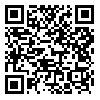Volume 14 - Special Issue, Vol.14,
irje 2019, 14 - Special Issue, Vol.14,: 27-39 |
Back to browse issues page
Download citation:
BibTeX | RIS | EndNote | Medlars | ProCite | Reference Manager | RefWorks
Send citation to:



BibTeX | RIS | EndNote | Medlars | ProCite | Reference Manager | RefWorks
Send citation to:
Yazdi Feyzabadi V, Mehrolhassani M, Pourhosseini S. Measuring Research Inequality in Medical Sciences Universities of Iran from 2008 to 2017: A Descriptive Study. irje 2019; 14 :27-39
URL: http://irje.tums.ac.ir/article-1-6142-en.html
URL: http://irje.tums.ac.ir/article-1-6142-en.html
1- Assistant Professor, PhD in Health Policy, Social Determinants of Health Research Center, Institute for Futures Studies in Health, Kerman University of Medical Sciences, Kerman, Iran
2- Associate Professor, PhD in Health Services Management, Modeling in Health Research Center, Institute for Futures Studies in Health, Kerman University of Medical Sciences, Kerman, Iran
3- MSc in Executive Administration, Health Services Management Research Center, Institute for Futures Studies in Health, Kerman University of Medical Sciences, Kerman, Iran ,sam_poorhoseyni@yahoo.com
2- Associate Professor, PhD in Health Services Management, Modeling in Health Research Center, Institute for Futures Studies in Health, Kerman University of Medical Sciences, Kerman, Iran
3- MSc in Executive Administration, Health Services Management Research Center, Institute for Futures Studies in Health, Kerman University of Medical Sciences, Kerman, Iran ,
Abstract: (3167 Views)
Background and Objectives: Research plays an important role in solving health problems in the community. One main mission of higher education institutions is developing research tailored to the needs of the community by providing equal and fair opportunities for research sectors. The present study aimed to measure inequality in the rea of research in Iranian medical sciences universities.
Methods: In this descriptive study, the Gini Coefficient (GC) was used to measure inequality from 2010 to 2016. The indexes included the number of published papers, citations, citation per paper, self-citation, Scimago Journal Rank (SJR), Source Normalized Impact per Paper (SNIP), Citescore, Hirsch
(h-index), number of faculty members, number of students, and educational and research budget. Stata 14 software was used for data analysis.
Results: During the study years, the GC of SJR, SNIP, and Citescore varied from 0.65 to 0.73, 0.62 to 0.73, and 0.61 to 0.72, respectively. In addition, The GC of international papers, total articles, self-citation, citation per article, Hirsch index, and total citations varied from 0.62 to 0.70, 0.56 to 0.66, 0.22 to 0.27, 0.12 to 0.28, 0.33 to 0.39, and 0.57 to 0.72, respectively. The GC of the number of faculty members and budget ranged from 0.26-0.40 and 0.34-0.67, respectively.
Conclusion: Inequality in self-citation and citation per article was relatively fair, while Hirsh and the number of faculty members had intermediate inequality. Other indicators had a high and very high inequality. To reduce inequality, developing of the balanced research infrastructures in medical universities is recommended.
Methods: In this descriptive study, the Gini Coefficient (GC) was used to measure inequality from 2010 to 2016. The indexes included the number of published papers, citations, citation per paper, self-citation, Scimago Journal Rank (SJR), Source Normalized Impact per Paper (SNIP), Citescore, Hirsch
(h-index), number of faculty members, number of students, and educational and research budget. Stata 14 software was used for data analysis.
Results: During the study years, the GC of SJR, SNIP, and Citescore varied from 0.65 to 0.73, 0.62 to 0.73, and 0.61 to 0.72, respectively. In addition, The GC of international papers, total articles, self-citation, citation per article, Hirsch index, and total citations varied from 0.62 to 0.70, 0.56 to 0.66, 0.22 to 0.27, 0.12 to 0.28, 0.33 to 0.39, and 0.57 to 0.72, respectively. The GC of the number of faculty members and budget ranged from 0.26-0.40 and 0.34-0.67, respectively.
Conclusion: Inequality in self-citation and citation per article was relatively fair, while Hirsh and the number of faculty members had intermediate inequality. Other indicators had a high and very high inequality. To reduce inequality, developing of the balanced research infrastructures in medical universities is recommended.
Type of Study: Research |
Subject:
Epidemiology
Received: 2019/01/20 | Accepted: 2019/01/20 | Published: 2019/01/20
Received: 2019/01/20 | Accepted: 2019/01/20 | Published: 2019/01/20
Send email to the article author
| Rights and permissions | |
 |
This work is licensed under a Creative Commons Attribution-NonCommercial 4.0 International License. |





